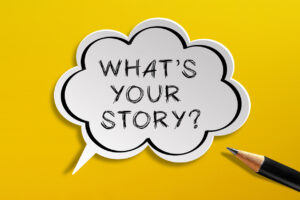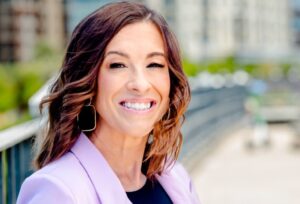Trust your talent: How backing off micromanaging makes for stronger branded stories
Learn how The Weather Channel’s Ally Hirschlag builds trust-based relationships with writers in her brand newsroom.

As any editor working in a brand newsroom will tell you, brand journalism and content marketing are not mutually exclusive. That doesn’t mean your brand journalism stories should read like advertisements, either.
It’s on communicators and branded content editors to tell brand stories that provide value to audiences on par with a straight news story. But in a time when real-time global conflicts place added pressure on brands to tell stories rooted in the moment, populating your brand newsroom with timely stories can feel overwhelming.
Ahead of her session at Ragan’s Brand Storytelling Conference on April 13, we caught up with Ally Hirschlag, branded content editor at The Weather Channel, to learn how she launched her first major brand campaign for Weather.com in a rush and what it taught her.
Ragan: What do you consider the most crucial elements of an effective brand story?

Hirschlag: A truly successful brand story doesn’t feel branded. The more you can make it fit in with the editorial content that you might find on your site or elsewhere, the more likely it is to attract attention, and, in turn, promote the brand.
Today’s audiences can sniff out advertising much better than they could even 10 years ago. And when they do, they tend to turn away immediately. The elements that help mitigate this effect are the same elements that make impactful, non-branded editorial content: clear, compelling storytelling, an angle that hooks an audience within the first few sentences and characters with whom people can relate and care about.
Ragan: You were tasked with building out your first major brand campaign for Weather.com in a rush. What was your first step?
Hirschlag: Since I was working by myself and largely without the support of staff writers, I quickly began building out my roster of freelance writers I knew could bring their A-game to this campaign.
The goal was to highlight grassroots efforts to combat the global water crisis, so I knew I needed seasoned environmental reporters. Thankfully, I’d worked with several previously who were pros at finding and crafting underreported sustainability stories. I was lucky that enough of them were interested and available for the assignment on short notice.
Ragan: What’s the biggest storytelling lesson you learned from that speedy win?
Hirschlag: I learned the importance of stepping back and trusting the talent I had brought on to deliver what I knew they could.
It can be tempting to micromanage writers when you’re working on a high stakes campaign on a tight deadline. That’s not to say I didn’t provide editorial guidance when they needed it or nudge them if they fell behind on a draft update, but I really tried to minimize my hand in everything.
Ultimately, we wound up with 18 truly distinctive, fascinating stories, and I don’t think that would’ve happened if I had excessively streamlined the drafts. The cohesion came from the overarching water scarcity theme, while the variety of writers’ voices gave the campaign the uniqueness it needed since we were covering such a wide spectrum of environmental solutions.
Hear more from Ally Hirschlag during Ragan’s Brand Storytelling Conference on April 13. Learn more and register here.







